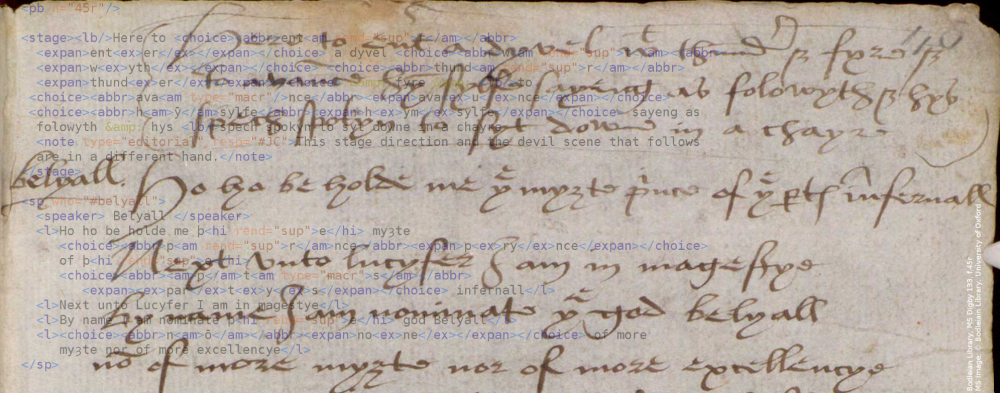I recently gave a keynote lecture at the University of Tokyo entitled “Problems and Possibilities: Working for Success in TEI Digital Humanities Projects”. This was as part of a larger symposium the events page of which at the time read:
国際シンポジウム
デジタルアーカイブ時代の人文学の構築に向けて
――仏教学のための次世代知識基盤の構築―― (同時通訳付き)[会場]
東京大学文学部法文2号館1番大教室
[日時]
2018年1月6日(土)13:00(開場12:30)-18:00
~7日(日) 9:30(開場 9:00)-15:30 [終了しました][参加申込(必須)]
[登壇者]
- ジェイムズ・カミングス/James Cummings (ニューカッスル大学)
課題と可能性― TEIを活用したデジタル・ヒューマニティーズプロジェクトを成功させるために
“Problems and Possibilities: Working for Success in TEI Digital Humanities Projects”Abstract:TEI (Text Encoding Initiative)ガイドラインに準拠するデジタル・ヒューマニティーズ(DH)プロジェクトを創り出す場合には、成功を確実にするのに役立ついくつかの良い事例がある。ジェイムズ・カミングス博士はそういった事例の一部、特に、そこでのTEIの活用に関する側面に着目する。それは、オープンで持続可能な手法でDHプロジェクトを構築することを奨励するためである。しかし、よく知られたプロジェクトを喧伝する代わりに、ここでは問題を抱えたプロジェクトや予想外の事態に直面したプロジェクトを採り上げる。そうすることで、どのようにして特定の問題群に対して適切なツールを活用するか、どのようにしてそのようなプロジェクトを災難から救い出すことを支援するコミュニティの一部としてオープンに活動するか、ということを提示する。そして、成功に必要な要素は、最悪のケースの想定、長期保存、そして資料の持続可能性について計画しておくことであると提示するだろう。In creating digital humanities projects based on the Guidelines of the Text Encoding Initiative (TEI) there are some good practices that can help ensure success. Dr James Cummings (Newcastle University) will look at some of these practices, especially where they relate to their use of the TEI, to encourage those building digital humanities projects to work in an open and sustainable manner. However, instead of just trumpeting the success of well-known projects Cummings will look at some projects which have had problems or had to cope with unexpected events. In doing so he will suggest how using appropriate tools for particular problems and working openly as part of a community helped save these projects from total disaster. He will suggest the key to success is planning for the worst-case scenarios, long-term preservation, and sustainability of resources.
Google Translate has the title of the symposium literally as “Towards the Construction of Humanities in the Age of Digital Archiving – Construction of the Next Generation Knowledge Base for Buddhist Studies”. While I am certainly not, nor ever will be, an expert in Buddhist Studies, I have been involved in lots of TEI Digital Humanities projects. Instead of reporting on the successes of these projects, I chose a handful where there had been some problem — almost never to do with the adoption of TEI, but more usually on the resourcing or management of it. I reported on the problems of these projects to hope that the DH projects in Japan might circumvent similar ones as they increase their digital humanities projects.
The abstract of the talk is above as part of the page, but an outline of the talk (for a 90 minute slot) was as follows:
- Short refresher on the TEI
- Case studies of projects with some degree of problem:
- CatCor: Correspondence of Catherine the Great
- William Godwin’s Diary
- CURSUS: An Online Resource of Medieval Liturgical Texts
- Poetic Forms Online: Renaissance to Modern
- LEAP: Livingstone Online Enhancement and Access Project
- SRO: Stationers Register Online
- ATNU: Animating Text Newcastle University (a new project
hoping to learn from these problems) - Possibilities: some thoughts on potential solutions
The visit was brief (3 nights) but rewarding in the conversations I had with many Japanese DH researchers.


